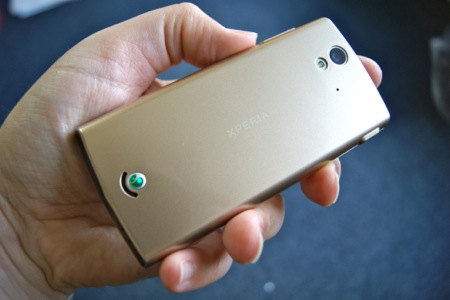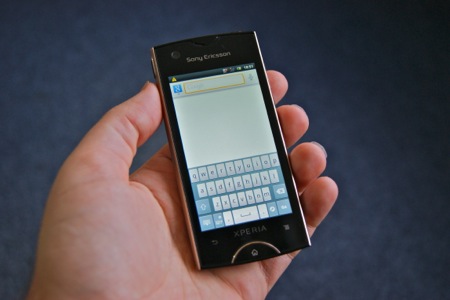
What a year Sony Ericsson has had so far. In January it announced the super-slim Xperia arc, followed by a number of variants in February and the Xperia ray in the summer.
Throw in the 'mini' models, plus a rugged model coming soon, and Sony Ericsson is very much back in business, with Android at the fore.
The other big change was the promise to keep the devices regularly updated, which it has done with a series of updates that haven't just kept Android revisions updated but added new features too.
But during this comprehensive roll-out of devices, an earthquake hit in Japan and affected the supply of key components. It forced the company to concentrate on getting key models out, letting others slip.
The neo was delayed to keep production of the arc going, and despite getting a release in the summer it'll soon be replaced by the neo V, with a 5-megapixel sensor standing in for the 8-megapixel Exmor R sensor that is in such short supply.

This has allowed Sony Ericsson to release the Xperia ray, which could be considered its flagship smartphone. I'd see it as more of a hero product, primarily because it looks special before you even switch it on, with a choice of bright metallic finishes that wrap around the whole phone.
Impressive visuals
Despite its diminutive size compared to most high-spec smartphones, its 3.3-inch screen has the same 854x480 pixel resolution as the arc, and the forthcoming arc S. That's a lot of pixels for such a small display area, which makes everything look stunning.
With the combination of the Mobile BRAVIA Engine software and an incredibly bright backlight, the screen is nothing short of awesome. If you thought the arc was too big and had thought of looking at the neo, forget it. The neo screen is very dull in comparison.
This review has of rather a lot of comparisons to the arc, with good reason. Besides the missing HDMI output and no dedicated camera button, the two phones are virtually identical.

Each uses the same processor as the other (1GHz Snapdragon) and includes the same amount of memory. The 8.1-megapixel camera and flash are also the same, with both offering HD video recording at 720p.
The ray does ship with a newer version of Android OS (2.3.4), but that is coming any day to the arc. What arc owners don't have that you will get here is the front-facing video camera, now appearing on almost every new Sony Ericsson model.
Staying power
Another new software feature is a Power Save Mode app that allows you to toggle features like wi-fi, GPS, data synchronisation, and screen brightness when the battery drops to a user-specified level, or manually enabled.
You can pick and choose from a very long list of configurable options, opting to keep certain features active regardless, or turn off most things to ensure the longest possible standby time.
Battery management options are always welcome, but the battery hasn't been reduced to the size of a pea to keep the size down. Inside you'll find the same 1,500mAh capacity battery as the arc, a testament to how well everything has been squeezed in.
No compromise
As screens are generally getting bigger, trying to bridge the gap between phone and tablet, the ray may seem like a backward step.
However, with a dot-pitch that's not far off that of the Retina display in the iPhone 4, the only real problem with a small screen is being able to enter text easily on the on-screen keyboard.
Even here, Sony Ericsson has thought ahead and added a traditional alphanumeric keypad as an alternative to a portrait QWERTY keyboard with tiny letters to prod. If you've become a master of predictive text, you'll jump at this option. You can even turn off the prediction and revert to an old-school multi-tap entry system.

With the new arc S on the horizon, and a dual-core model almost certain to be announced soon, the ray is no longer amongst the fastest Android smartphones from Sony Ericsson, but with the Neocore benchmark app (testing the graphical performance of the Qualcomm chipset) returning 59.4 frames per second, it's no slouch.
The screen is very responsive, but you may find games that require a lot of fingertip precision or use on-screen joysticks a bit tricky to control.
It's perhaps the only compromise you have to make on the whole phone, but it could be a major one if that's what you want from the phone, or your eyesight isn't as good as it once was.
Sony Ericsson might already think gaming isn't its strongest point, having decided not to ship the phone with any games installed out of the box. However, if you're a casual gamer then most of the simple games can, and do, work just fine.

Sony Ericsson Xperia ray

